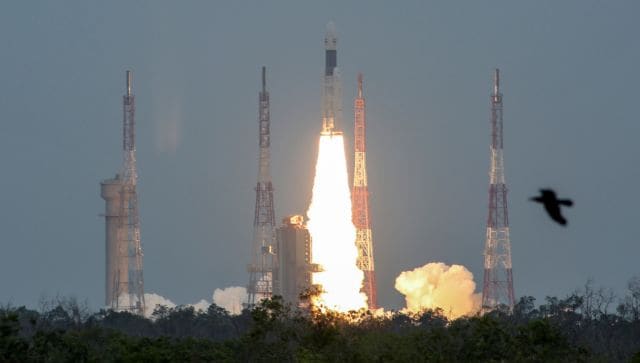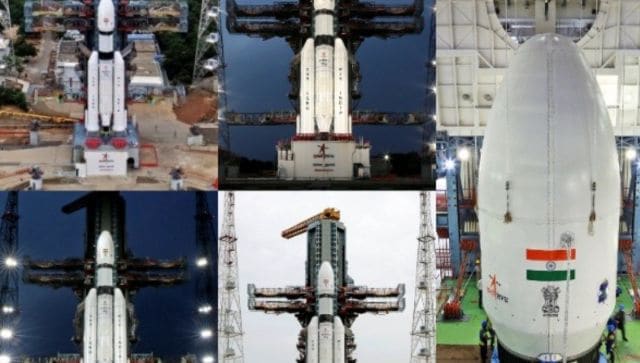The Indian Space Research Organisation’s Chandrayaan-3 is set to launch today afternoon at 2.35 pm. The ISRO’s launch, which comes four years after its Chandrayaan-2 mission, aims to make India just the fourth country after the United States, China and the former Soviet Union to soft-land on the Moon’s surface. The Chandrayaan-3 mission, like its predecessor, is set to be launched in July. This mission also aims to explore the South Pole of the Moon. But how is Chandrayaan-3 different from Chandrayaan-2? Let’s take a closer look: The equipment Chandrayaan-2 comprised the Orbiter, Lander (Vikram) and Rover (Pragyan), while the Chandrayaan-3 mission consists of an indigenous propulsion module, lander module and a rover. As per Gadgets360, the Chandrayaan-3 carries an instrument named the Spectro-polarimetry of HAbitable Planet Earth (SHAPE) – which its predecessor did not. SHAPE has been installed in Chandrayaan-3’s propulsion module. According to Indian Express, the lander’s physical structure has been altered including removing its central thruster – thus reducing these engines from five to four.
The legs have also been made stronger to allow it to land at a higher velocity.
ISRO chairman S Somanath told The Times of India, “There are a lot of improvements on the lander. Basically, what were the deficiencies we were trying to overcome? One is the lander legs, which we expected could have withstood a higher velocity [during Chandrayaan-2]. So how much can we increase the velocity tolerance in the available structure? We have enhanced the landing velocity to 3m/second from 2m/second. That means even at 3m/sec, the lander will not crash or break [its legs].” “We asked if it lands with higher velocity, what will happen? Can it not land? Then we increased the vertical velocity component from 2 m/s to 3 m/s and tested it totally,” Somanath added. Even more solar panels added to the lander. Somanath told PTI the additional solar panels will allow it to ensure that it generates power no matter how it lands. [caption id=“attachment_12863172” align=“alignnone” width=“640”] LVM-3 carrying Chandrayaan-2 spacecraft in 2019. Reuters File Photo[/caption] The spacecraft was also tested for ability to withstand vibrations by flying it over different terrains using a helicopter, while cranes were used to test the landing processes, he said. “We did new test beds for simulation, which was not there last time. This was to look at failure scenarios,” Somanath said. Somanath also said the Chandrayaan-3 also has more fuel than the Chandrayaan-2. This increased its ability to travel, handle dispersion or move to an alternate landing site. Somanath told The Times of India, a new sensor called the laser doppler velocity metre – which examines lunar terrain – has also been added. “….through laser source sounding, we will be able to get components of three velocity vectors. We will be able to add this to the other instruments available, thereby creating redundancy in measurement,” Somanath added. According to Business Today, the lander also has a Laser Retroreflector Array (LRA). Gadgets 360 quoted ISRO as saying that the Chandrayaan-3 has two lander hazard detection and avoidance cameras, whereas the Chandrayaan-2 craft had just one camera. The Chandrayaan-3 cameras are also said to be better than the Chandrayaan-2 camera. ‘Failure-based design’ Somanath said instead of a success-based design in Chandrayaan-2, the space agency opted for a failure-based design in Chandrayaan-3.
LVM-3 carrying Chandrayaan-2 spacecraft in 2019. Reuters File Photo[/caption] The spacecraft was also tested for ability to withstand vibrations by flying it over different terrains using a helicopter, while cranes were used to test the landing processes, he said. “We did new test beds for simulation, which was not there last time. This was to look at failure scenarios,” Somanath said. Somanath also said the Chandrayaan-3 also has more fuel than the Chandrayaan-2. This increased its ability to travel, handle dispersion or move to an alternate landing site. Somanath told The Times of India, a new sensor called the laser doppler velocity metre – which examines lunar terrain – has also been added. “….through laser source sounding, we will be able to get components of three velocity vectors. We will be able to add this to the other instruments available, thereby creating redundancy in measurement,” Somanath added. According to Business Today, the lander also has a Laser Retroreflector Array (LRA). Gadgets 360 quoted ISRO as saying that the Chandrayaan-3 has two lander hazard detection and avoidance cameras, whereas the Chandrayaan-2 craft had just one camera. The Chandrayaan-3 cameras are also said to be better than the Chandrayaan-2 camera. ‘Failure-based design’ Somanath said instead of a success-based design in Chandrayaan-2, the space agency opted for a failure-based design in Chandrayaan-3.
S Somanath on Monday explained what went wrong with the Vikram lander of Chandrayaan-2.
“The primary issues were, one we had five engines which were used to give the reduction of the velocity, which is called the retardation. These engines developed higher thrust than what was expected,” he told reporters here on the sidelines of India Space Congress organised by SIA India. Somanath said that when such a higher thrust was happening, the errors on account of this differential were accumulated over some period. “All the errors got accumulated, which was on the higher side than what we had expected. The craft had to make very fast turns. When it started to turn very fast, its ability to turn was limited by the software, because we never expected such high rates to come. This was the second issue,” the ISRO chief said. He said the third reason for failure was the small 500m x 500m site identified for landing the spacecraft. [caption id=“attachment_12862952” align=“alignnone” width=“640”] Chandrayaan-3 mission (Images tweeted by @isro)[/caption] “The craft was trying to reach there by increasing the velocity. It was almost close to the ground and kept on increasing the velocity,” Somanath said. “We expanded the area of landing from 500m x 500m to four km by 2.5 km. It can land anywhere, so it doesn’t limit you to target a specific point. It will target a specific point only in nominal conditions. So, if the performance is poor, it can land anywhere within that area,” Somanath said. “We looked at very many failures – sensor failure, engine failure, algorithm failure, calculation failure. So, whatever be the failure we want it to land at the required speed and rate. So, there are different failure scenarios calculated and programmed inside,” Somanath said. Cost In 2019, the then space agency’s chairman K Sivan pegged the cost of the Chandrayaan-2 mission at Rs 1,000 crore Meanwhile, the Chandrayaan-3 will cost the taxpayer around 615 crore, as per Indiatimes. With inputs from agencies
Chandrayaan-3 mission (Images tweeted by @isro)[/caption] “The craft was trying to reach there by increasing the velocity. It was almost close to the ground and kept on increasing the velocity,” Somanath said. “We expanded the area of landing from 500m x 500m to four km by 2.5 km. It can land anywhere, so it doesn’t limit you to target a specific point. It will target a specific point only in nominal conditions. So, if the performance is poor, it can land anywhere within that area,” Somanath said. “We looked at very many failures – sensor failure, engine failure, algorithm failure, calculation failure. So, whatever be the failure we want it to land at the required speed and rate. So, there are different failure scenarios calculated and programmed inside,” Somanath said. Cost In 2019, the then space agency’s chairman K Sivan pegged the cost of the Chandrayaan-2 mission at Rs 1,000 crore Meanwhile, the Chandrayaan-3 will cost the taxpayer around 615 crore, as per Indiatimes. With inputs from agencies
)